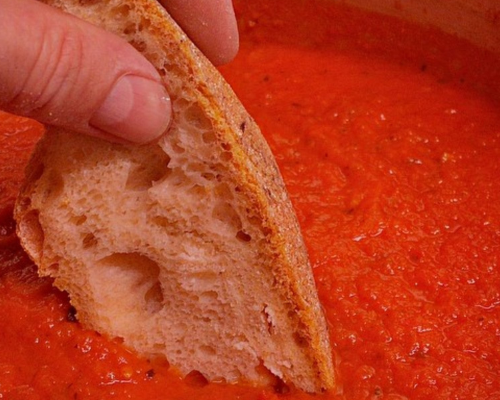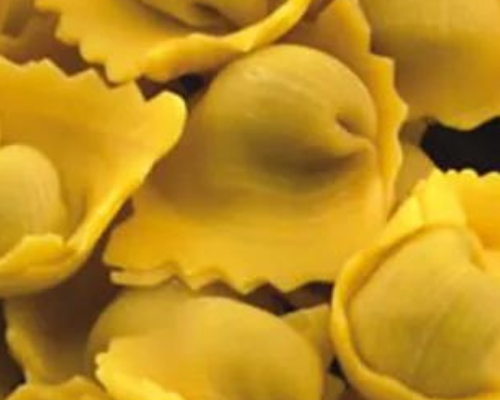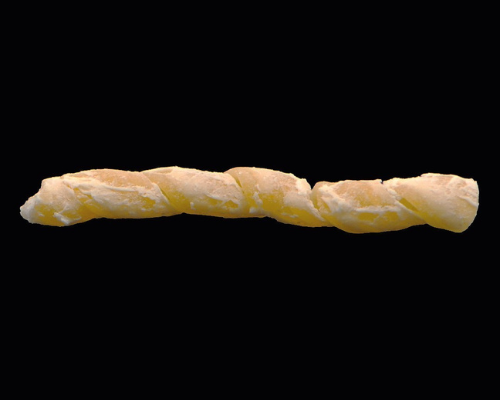Salsa al Limone, or Lemon Sauce, is a bright and tangy pasta sauce that hails from the sunny regions of Italy. This delightful sauce is known for its simplicity and fresh flavors, featuring the vibrant essence of lemons paired with garlic, olive oil, and herbs. Let’s explore the history, heritage, development, and variants of this classic Italian sauce, along with the pasta shapes that complement it perfectly.
History and Heritage
The history of Salsa al Limone is rooted in southern Italian cuisine, where lemons are abundant and widely used in both sweet and savory dishes. Lemons have been a staple ingredient in Mediterranean cooking for centuries, and their zest and juice bring a unique brightness to dishes.
Salsa al Limone likely evolved as a way to showcase the flavors of lemons in a pasta sauce, providing a refreshing alternative to heavier tomato-based or cream-based sauces.
Development and Ingredients
The key ingredients of Salsa al Limone include fresh lemons (zest and juice), garlic, extra-virgin olive oil, salt, pepper, and sometimes fresh herbs like parsley or basil. The sauce is made by sautéing minced garlic in olive oil until fragrant, then adding lemon zest and juice to create a flavorful base.
The sauce is typically finished with salt, pepper, and chopped herbs, and then tossed with cooked pasta to coat each strand with its bright and tangy flavors.
Variants and Adaptations
While the classic recipe for Salsa al Limone is relatively straightforward, there are variations and adaptations that reflect regional preferences and creative interpretations. Some versions of the sauce may include capers for a briny touch, or crushed red pepper flakes for a hint of heat.
In modern interpretations, Chefs and Home Cooks may experiment with different citrus fruits such as Meyer lemons or blood oranges to create unique variations of Salsa al Limone while staying true to its essence as a lemon-based pasta sauce.
Usage and Pasta Pairings
Salsa al Limone is traditionally paired with pasta shapes that can hold the sauce well and allow the flavors to shine. Some popular pasta shapes that work beautifully with Salsa al Limone include:
- Linguine: Long, thin pasta strands that pair perfectly with the light and zesty lemon sauce.
- Spaghetti: A classic pasta shape that allows the sauce to cling to each strand, creating a harmonious blend of flavors.
- Farfalle (Bowtie pasta): Delicate pasta shapes that capture the lemony sauce in their folds, offering a delightful texture with each bite.
These pasta shapes provide the perfect canvas for Salsa al Limone, ensuring that each mouthful is a burst of citrusy freshness.
Cultural Significance
Salsa al Limone holds cultural significance in Italian cuisine, particularly in the southern regions where lemons are a prized ingredient. It is often enjoyed during the warmer months as a light and refreshing pasta dish that highlights the flavors of the Mediterranean.
Conclusion
In conclusion, Salsa al Limone is a delightful and versatile pasta sauce that celebrates the vibrant flavors of lemons. With its simple yet impactful ingredients, this sauce adds a refreshing twist to pasta dishes and showcases the essence of Mediterranean cooking. Experience the zesty goodness of Salsa al Limone and bring a taste of sunny Italy to your table with this classic lemon sauce.
- 50 gram Butter unsalted
- 2 zest Lemon untreated
- 2 Juice of Lemon fresh
- 250 ml Cooking Cream 35.1% at least
- t.t Sea Salt
- t.t Black Pepper coarse ground
- 300 gram Pasta of your choice
- t.t Parsley fresh chopped for garnish
- t.t Parmigiano Reggiano for serving
In a saucepan, melt the butter over medium heat.
Add the lemon zest to the melted butter and sauté for about 1 minute toinfuse the flavor.
Pour in the lemon juice and stir well to combine with the butter and zest.
Reduce the heat to low and slowly pour in the heavy cream, stirring continuously.
Simmer gently for 3-4 minutes, allowing the sauce to thicken slightly. Season with salt and pepper to taste. Remove from heat and set aside.
Bring a large pot of salted water to a boil.
Add the pasta and cook according to package instructions until al dente.
Reserve about 1 cup (250ml) of pasta cooking water, then drain the pasta.
Return the drained pasta to the pot.
Pour the prepared lemon cream sauce over the pasta and toss gently tocoat each strand evenly. If the sauce is too thick, add some of the reservedpasta cooking water to loosen it.
Divide the lemon pasta among serving plates or bowls.
Garnish with chopped fresh parsley and grated Parmesan cheese, if desired.
Serve immediately and enjoy this refreshing and flavorful lemon pasta dish!
Recipe Notes:
- Adjust the amount of lemon juice and zest according to your taste preference. For a stronger lemon flavor, you can increase the amount of zest.
- This lemon sauce pairs well with various pasta shapes, including long noodles like Spaghetti or Linguine.
- For a lighter version of this sauce, you can substitute part or all of the heavy cream with half-and-half or milk, though the consistency and flavor will be slightly different.








